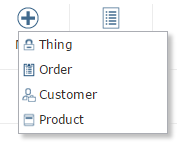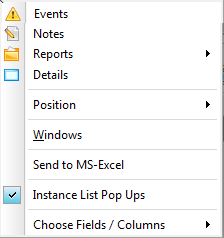
You can enable a command for the Framework, an application or a business object and then assign a command handler to it. The command handlers perform the actual processing in the application.
So far we have seen that Filters produce Instance Lists of Business Objects for end-users to action.
For example, a list of all the employees who started work last year might be produced by an Employee business object filter.
To "action" a business object instance the end-user normally executes a command against it.
For example, working with the list of Employees that started work last year an end-user might then choose to execute one of these commands against one or more of the employees displayed:
An application designer can actually enable a command for the Framework, an application or a business object and then assign a command handler to it.
The command handlers perform the actual processing in the application (e.g.: Prints the employee details, Sends the email, Displays the History, etc.).
|
Framework Commands |
Global commands, such as Exit, Backup and Help, are available anywhere, anytime. |
|
Application Commands |
Application commands are used when you are working within a specific application and they apply to the application as a whole. Backup, Restore and Reports might be valid commands when working with the Human Resources application. |
|
Business Object Commands |
Business object (Customers, Products, Orders) commands are used when you are working within a business object and they typically apply to the business object as a complete group or collection. If you are working with a business object named Employee then for example New would be a valid command. |
|
Business Object Instance Commands |
Business Object Instance commands can only be used when you are working within specific instances of a business object. If you were working with a business object named Employee then Details, Skills, Timesheets, Print and Delete may all be valid commands for a specific employee. |
Commands can be visualized by the Framework in several different ways. In a menu on the menu bar or in a pop-up menu:
VLF-ONE


On the toolbar:
VLF-ONE


When a user has selected an object and then selects (i.e.: executes) a command then the associated What Is a Command Handler? is invoked.